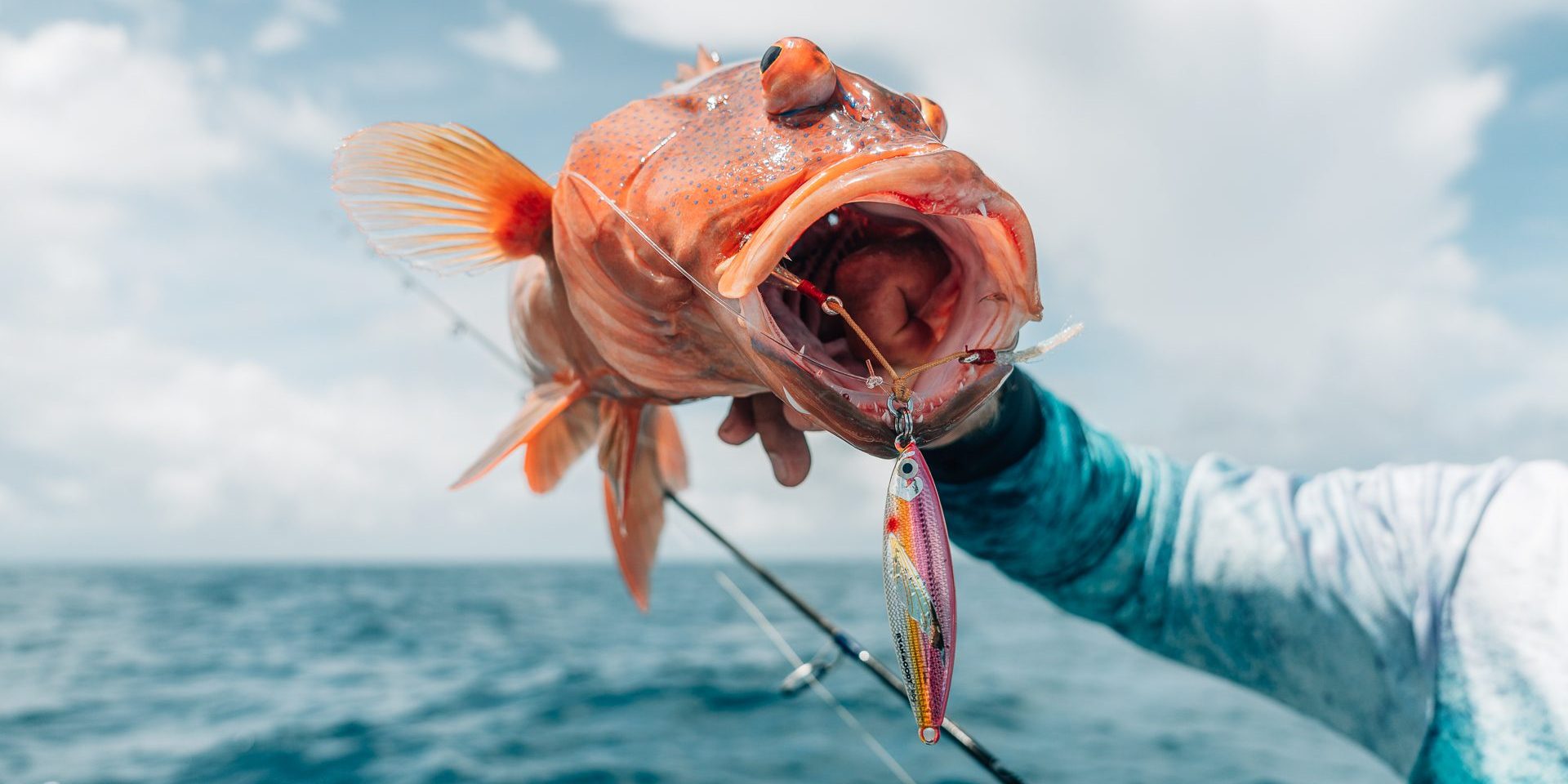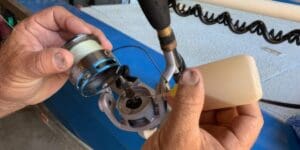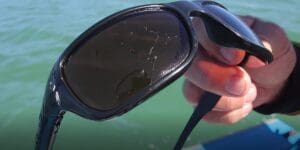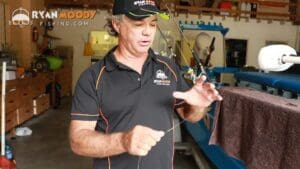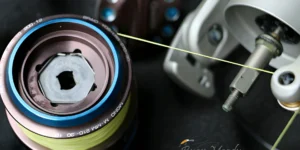Slow pitch jigging is Ryan’s favourite technique for bottom dwelling demersals.
And with a different retrieve, also works well on pelagics. Slow pitch jigging or SPJ for short originated in Japan. Hence our RMF Levitator slow pitch jigs were designed there! After trialling many different types of jig, these were such a standout we decided to import them. These jigs “levitate” in the strike zone, making it easier to master the art of deliberate lure presentation.What is slow pitch jigging?
Essentially SPJ is using a light, flexible rod to jig a metal jig up and down like a tea bag. Obviously there’s more to it than that! The key is in the fall. Working the lure to allow it to “flutter” down into the strike zone. 90% of the time, the lure will get hit on the fall. Unlike a sinker than just drops to the bottom, these jigs are designed to duck and weave, imitating an injured baitfish. And the key for the angler, is to get as much life out of the jig as possible. Which is why the rods are super light and flexible. To get the most action out of the lure as possible. We have a list of rods and reels used for jigging (and other forms of fishing) in our gear and tackle cheat sheet.Pros of SLOW PITCH JIGGING
- Anything eats these jigs. As you’ll see in the video below
- Nice clean boat – no dirty bait to clean up
- Get smacked as soon as they hit the bottom (or move on)
Cons of SLOW PITCH JIGGING
- Specialist gear. The Palmarius custom rods shown in the video are quite expensive. (enquire here).
- Takes some time to master various jigging techniques, so you have some variety.
Mastering the technique
The key to successful slow pitch jigging lies in mastering the technique. Start by dropping the jig to the desired depth, then work it back up with a series of gentle rod movements, using a rhythmic up-and-down motion. The lure should flutter and dance enticingly, imitating a vulnerable prey item. Vary the rhythm, speed, and depth of your jigging to find what triggers the fish’s interest.Quick tips
- Practice in the pool so you can see how the lure is effected.
- We provide a step-by-step demo on technique upon purchase of one of our RMF “Levitator” lures.
- As you’ll see in the video, using this technique on isolated structure is the BOMB.
- Braided lines provide the sensitivity needed to transmit the lure’s action.
- A slow pitch rod, typically around 5’6 to 6’0 feet in length, has a delicate tip and strong, powerful mid section.
Jigging in the right locations!
Ryan makes no secret of the fact that he loves finding new untouched spots using his depth sounder.
Because these locations are unknown to many anglers and yield better catches of trophy fish.
We have some free training that helps you see “The Big Picture” when it comes to your unit.
Remember: Nothing changes if nothing changes.
The video takes 20 minutes and then we have a 5 email “quick tips” series to help you get the most out of it.
Enter your name and email below to sign up for the free training.
Mastering the Art!
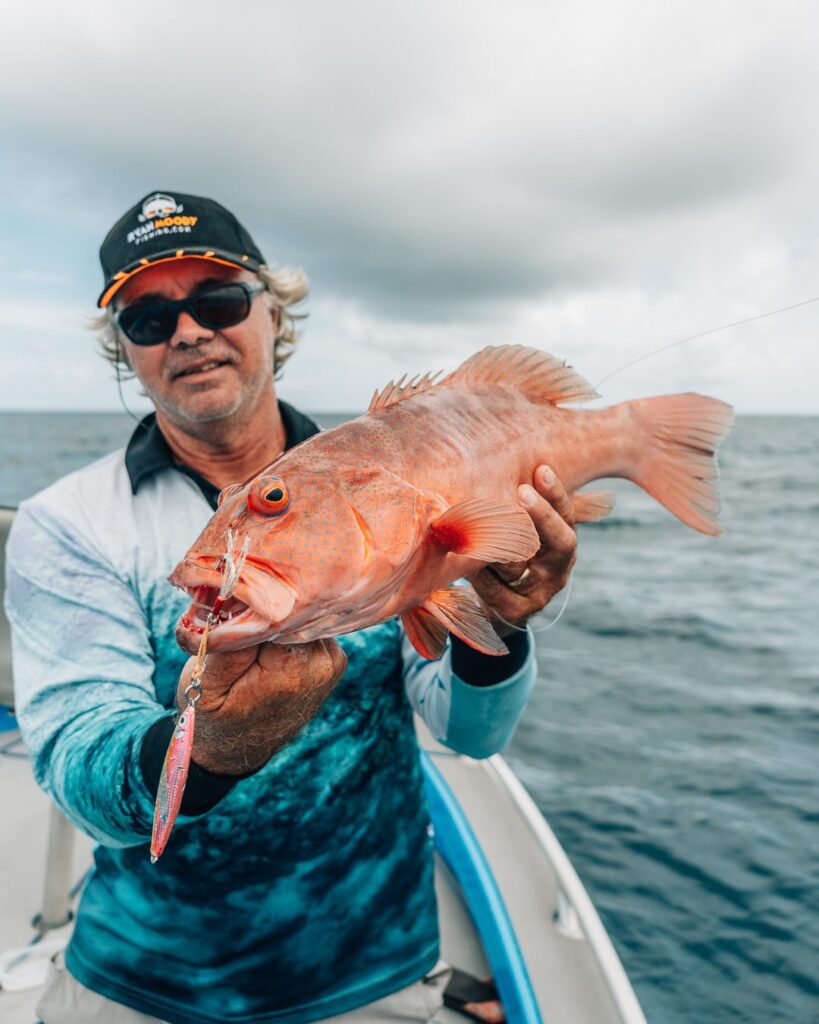
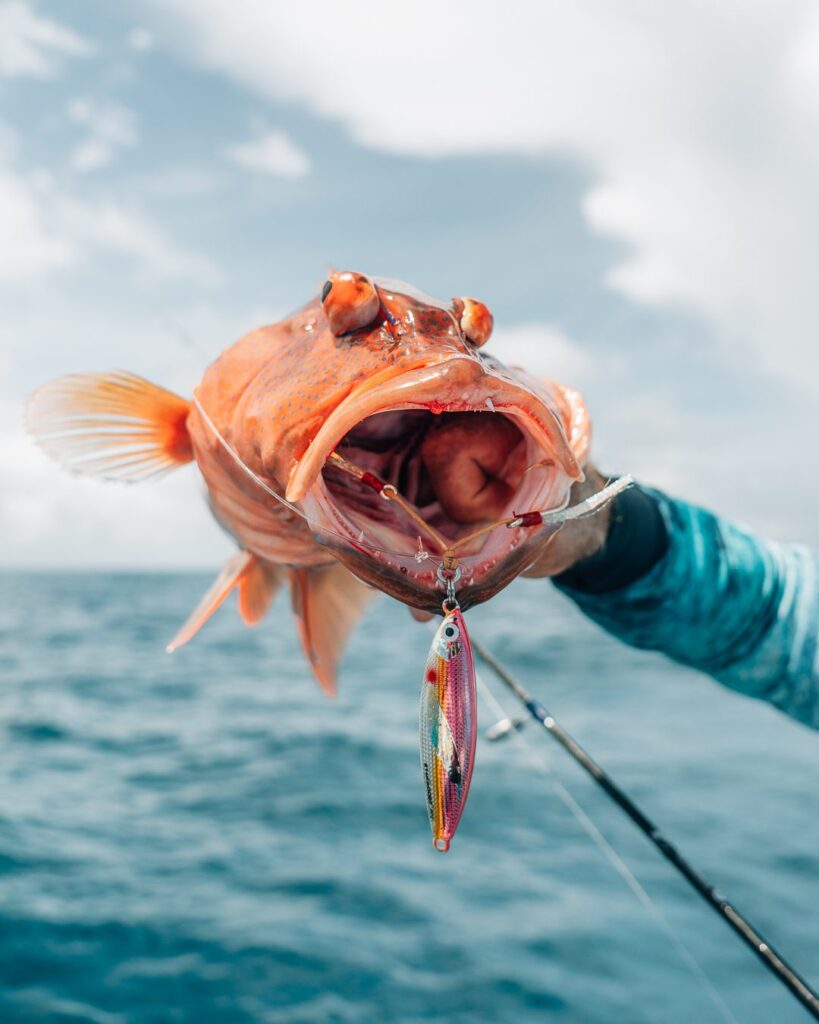
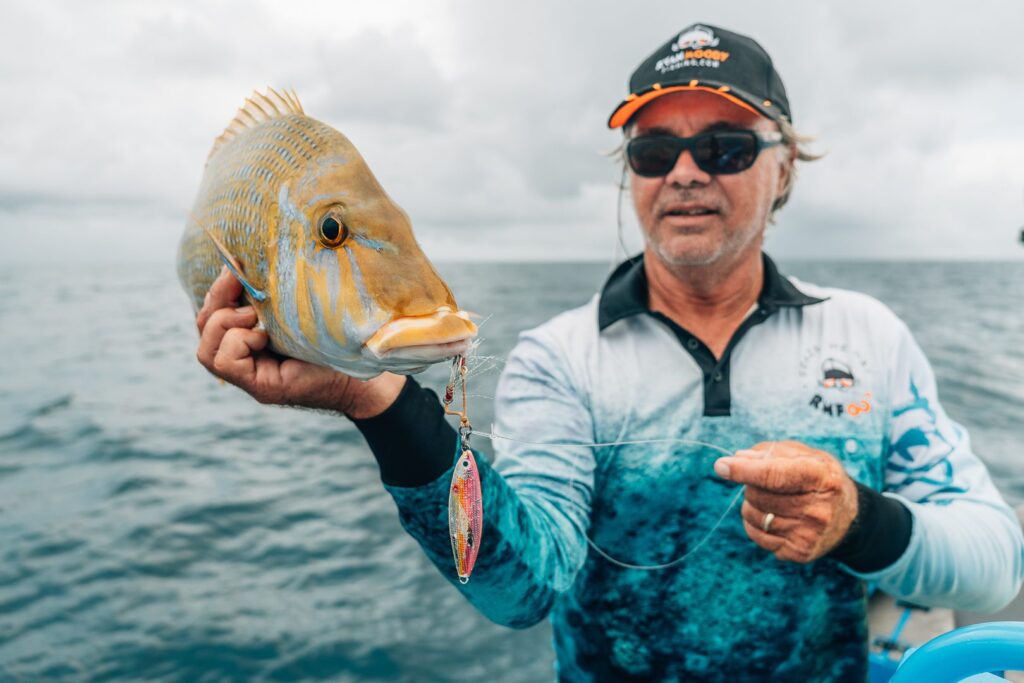
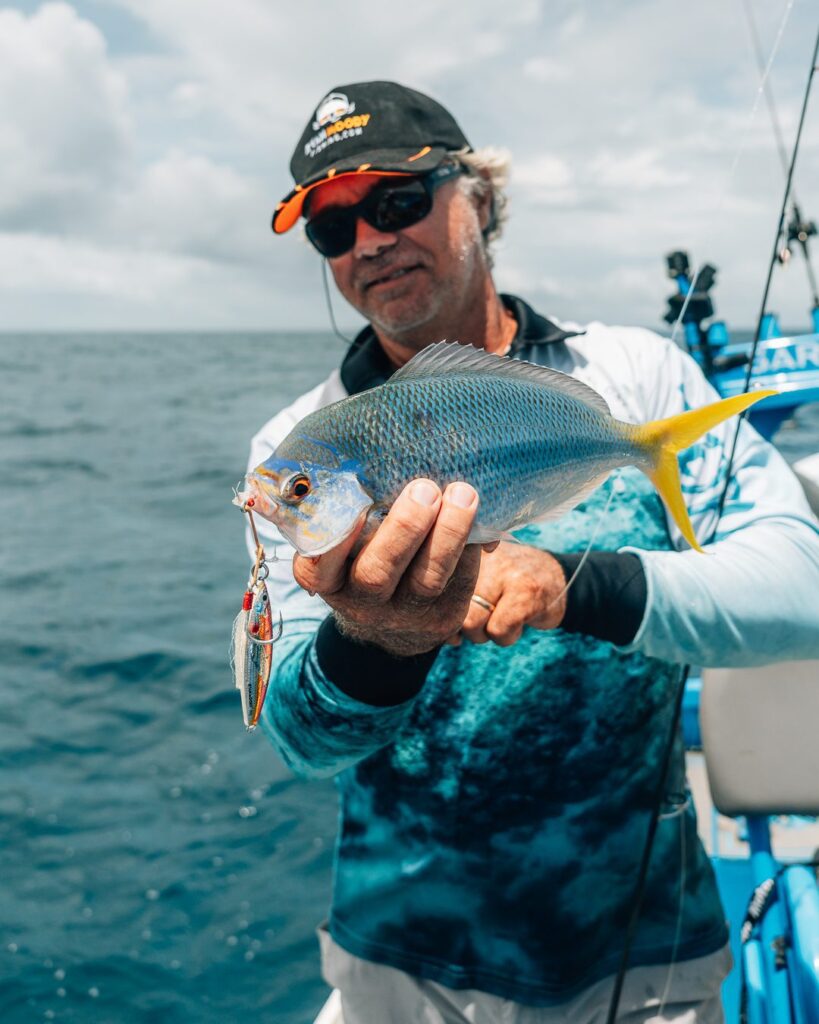
GEAR USED
- Salty Dog Custom rod on Palmarius blank. Give my mate Ron Farren a call on 0437 474 053.
- The reel is a Fin-Nor Primal PR12 LS overhead.
- 50 lb Rovex braid.
- Lure: Levitator 80g
We provide a step by step instuctional video on Ryan’s jigging technique on purchase of one of our jigs!
For more gear and tackle suggestions, grab our cheat sheet…
Slow pitch jigging presents a thrilling and effective approach to reef fishing, allowing anglers to connect with a wide range of species while employing a deliberate and enticing lure presentation.
By mastering the technique, understanding the equipment, and fishing in the right locations, you can elevate your reef fishing game and experience the excitement of slow pitch jigging firsthand.
Happy fishing!
MORE EPISODES…
I hope you enjoyed Episode 11 of our Northern Safari series – Slow pitch jigginf for reef fish. Missed an episode? – simply click here to bounce back to the beginning.
New episodes drop each Thursday so stay tuned… And while you’re here, why not take a look at some of our other tips and fishing action videos below.




